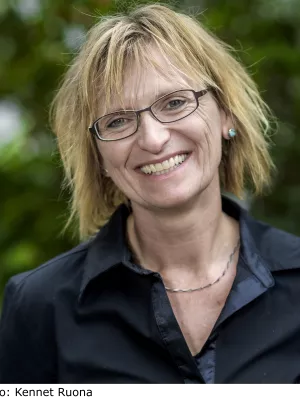
Natascha Kljun
Professor

Integrating continuous atmospheric boundary layer and tower-based flux measurements to advance understanding of land-atmosphere interactions
Författare
Summary, in English
The atmospheric boundary layer mediates the exchange of energy, matter, and momentum between the land surface and the free troposphere, integrating a range of physical, chemical, and biological processes and is defined as the lowest layer of the atmosphere (ranging from a few meters to 3 km). In this review, we investigate how continuous, automated observations of the atmospheric boundary layer can enhance the scientific value of co-located eddy covariance measurements of land-atmosphere fluxes of carbon, water, and energy, as are being made at FLUXNET sites worldwide. We highlight four key opportunities to integrate tower-based flux measurements with continuous, long-term atmospheric boundary layer measurements: (1) to interpret surface flux and atmospheric boundary layer exchange dynamics and feedbacks at flux tower sites, (2) to support flux footprint modelling, the interpretation of surface fluxes in heterogeneous and mountainous terrain, and quality control of eddy covariance flux measurements, (3) to support regional-scale modeling and upscaling of surface fluxes to continental scales, and (4) to quantify land-atmosphere coupling and validate its representation in Earth system models. Adding a suite of atmospheric boundary layer measurements to eddy covariance flux tower sites, and supporting the sharing of these data to tower networks, would allow the Earth science community to address new emerging research questions, better interpret ongoing flux tower measurements, and would present novel opportunities for collaborations between FLUXNET scientists and atmospheric and remote sensing scientists.
Avdelning/ar
- MERGE: ModElling the Regional and Global Earth system
- BECC: Biodiversity and Ecosystem services in a Changing Climate
- Centrum för miljö- och klimatvetenskap (CEC)
- Institutionen för naturgeografi och ekosystemvetenskap
Publiceringsår
2021-09-15
Språk
Engelska
Publikation/Tidskrift/Serie
Agricultural and Forest Meteorology
Volym
307
Länkar
Dokumenttyp
Artikel i tidskrift
Förlag
Elsevier
Ämne
- Meteorology and Atmospheric Sciences
Nyckelord
- Atmospheric inversion
- Atmospheric inversion models
- Boundary layer
- Eddy covariance
- Land-atmosphere
- Micrometeorology
- Remote sensing
Status
Published
ISBN/ISSN/Övrigt
- ISSN: 0168-1923